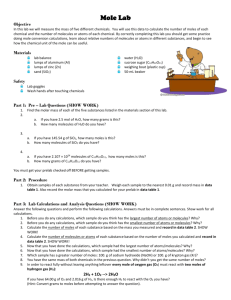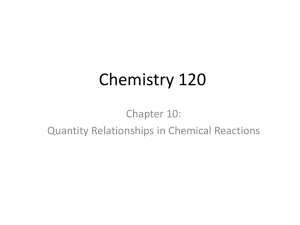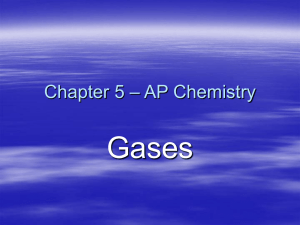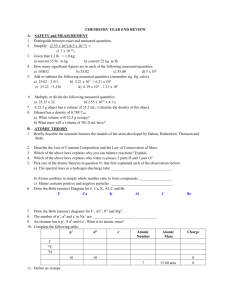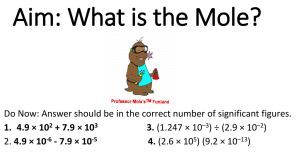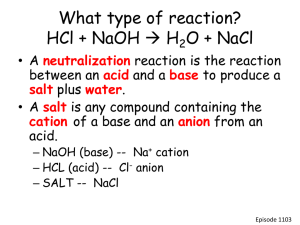Stoichiometry & Balancing Equations Worksheet
advertisement
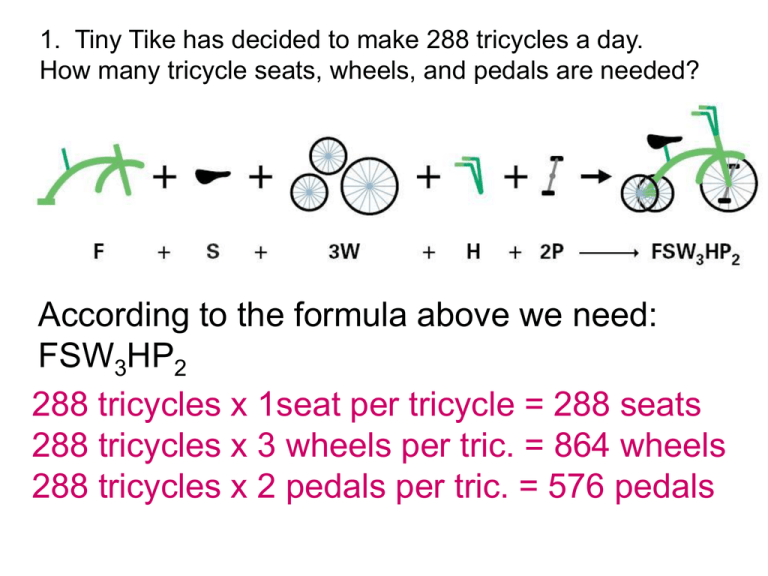
1. Tiny Tike has decided to make 288 tricycles a day. How many tricycle seats, wheels, and pedals are needed? According to the formula above we need: FSW3HP2 288 tricycles x 1seat per tricycle = 288 seats 288 tricycles x 3 wheels per tric. = 864 wheels 288 tricycles x 2 pedals per tric. = 576 pedals 2. Write an equation that gives your own “recipe” for making a skateboard. 4 wheels + 1 board + 2 axles 1 skateboard 4 W + B + 2A W4BA2 3. Interpret the equation for the formation of water from its elements in terms of numbers of molecules, and moles, and volumes of gases at STP 2H2(g) + O2 (g) 2 H2O(g) Molecules: 2 molecules of hydrogen + 1 molecule of oxygen 2 molecules of water vapor Moles: Volume: 2 moles of hydrogen + 1 mole of oxygen 2 moles of water vapor 44.8 liters of hydrogen + 22.4 liters of oxygen 44.8 liters of water vapor 4. balance the following equation C2H2(g) + O2 (g) CO2(g) + H2O(g) Interpret the balanced equation in terms of relative numbers of moles, volumes of gases at STP and masses of reactants and products. 2C2H2(g) + 5O2 (g) Moles: Volumes: Masses: 4CO2(g) + 2H2O(g) 2 moles of C2H2 + 5 moles of O2 4 moles of CO2 + 2 moles of H2O 44.8 L C2H2 + 112 L O2 89.4 L CO2 + 44.8 L H2O 212 g reactants 212 g products Key Concept: 5. How is a balanced equation similar to a recipe? A balanced equation shows the relative amounts of ingredients and the expected amounts of the products Key Concept 6. How do chemists use balanced equations? as a basis to calculate how much reactant is needed and how much product is expected to be formed. Key Concept 7. Chemical reactions can be described in terms of what quantities? numbers of atoms, molecules, or moles masses, and volumes. Key Concept 8.What quantities are always conserved in chemical reactions? atoms and masses Example: 2C2H2(g) + 5O2 (g) 4CO2(g) + 2H2O(g) In the above equation, you have the same number of atoms on each side and the same total mass on each side. You DO NOT have the same number of MOLES on each side (7 on the left, 6 on the right) or VOLUME (7 x 22.4 Liters on the left, 6 x 22.4 on the right) or MOLECULES (7 on the left, 6 on the right) 9. Interpret the equation in terms of relative numbers of representative particles, numbers of moles, and masses of reactants and products. 2K(s) + 2H2O (g) Representative particles: 2 KOH(aq) + H2(g) 2 atoms K + 2 molecules H2O 2 formula units KOH + 1 molecule H2 Moles: 2 moles K + 2 moles H2O 2 moles KOH + 1 mole H2 Masses: 78.2 g K + 36.0 g H2O 112.2 g KOH + 2.0 g H2 10. balance the following equation C2H5 OH (l) + O2 (g) CO2(g) + H2O(g) Show that the balanced equation obeys the law of conservation of mass. C2H5 OH (l) + 3O2 (g) 2CO2(g) + 3H2O(g) On each side of the equation you have the same number and weight of atoms. You cannot gain or lose atoms in any chemical reaction. Mass is not created or destroyed.
